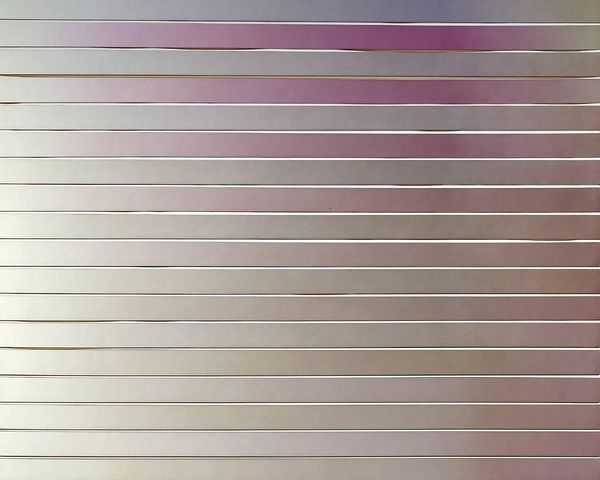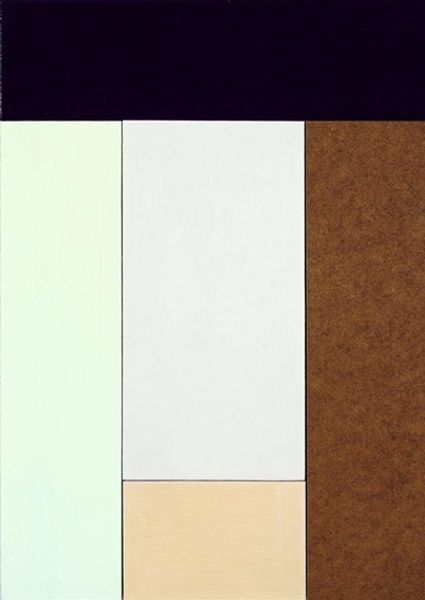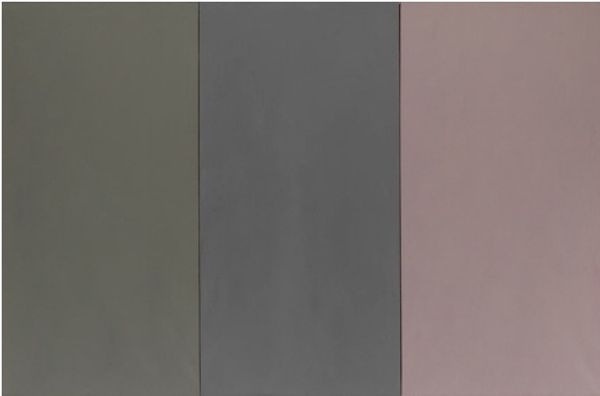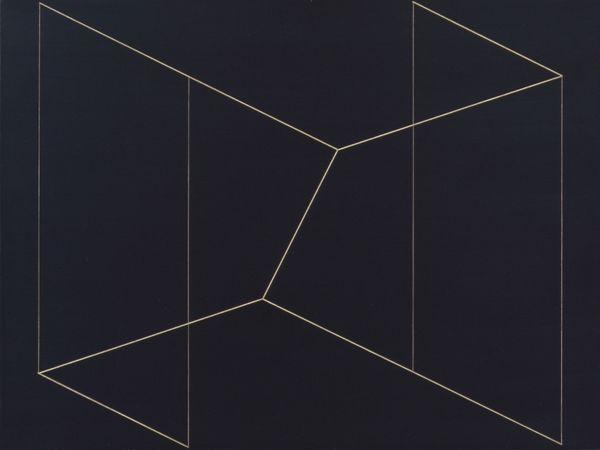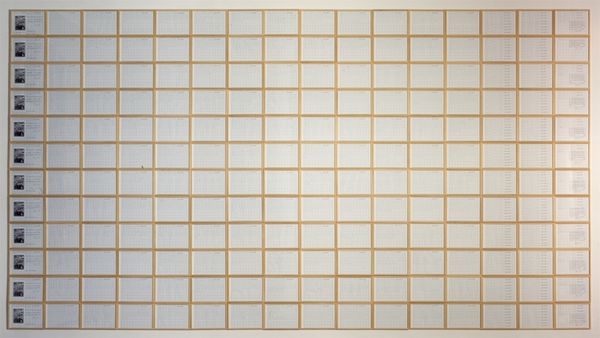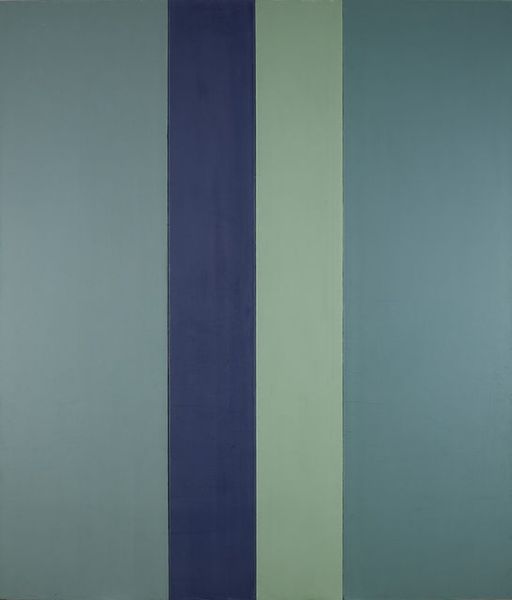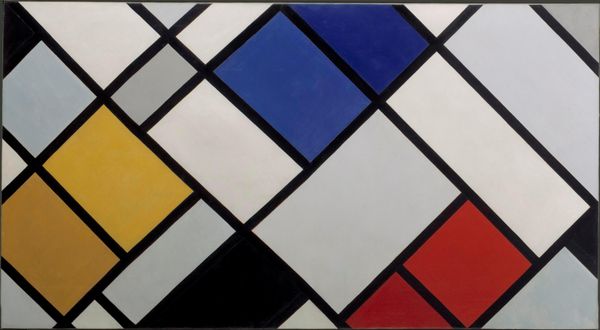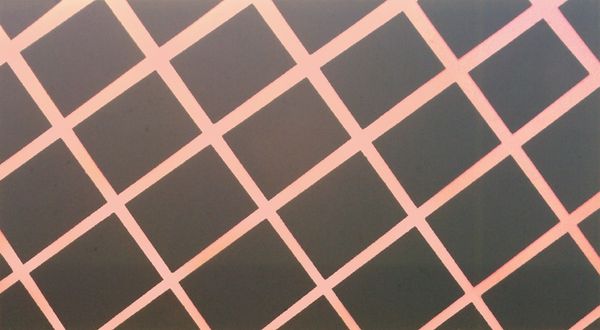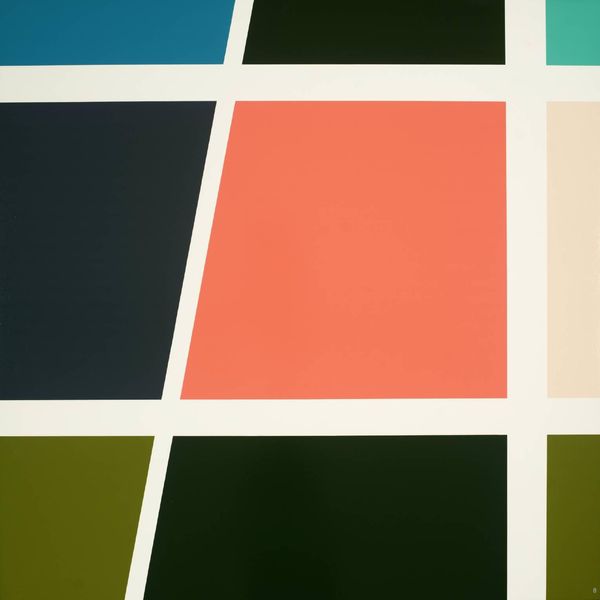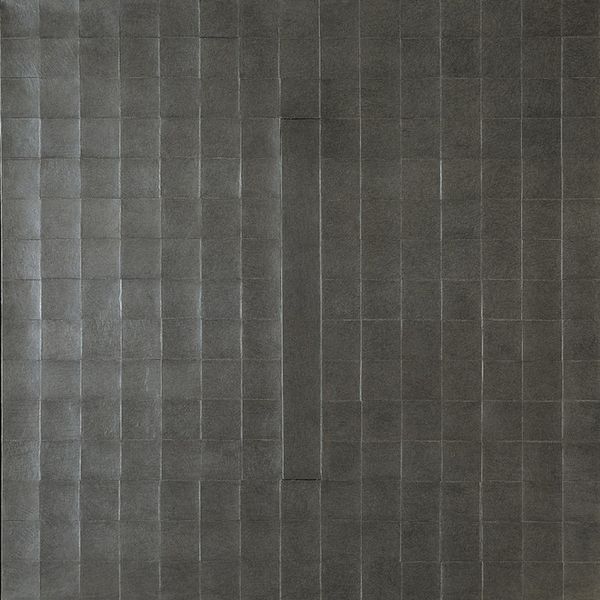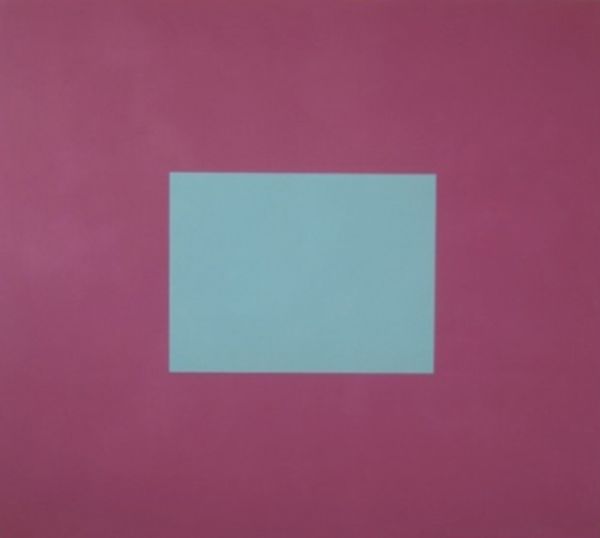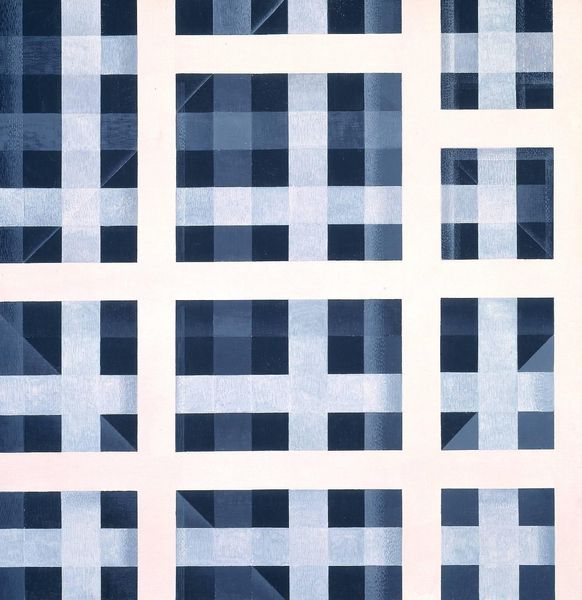![Microchromie, gris puissance [6] by Fernand Leduc](/_next/image?url=https%3A%2F%2Fd2w8kbdekdi1gv.cloudfront.net%2FeyJidWNrZXQiOiAiYXJ0ZXJhLWltYWdlcy1idWNrZXQiLCAia2V5IjogImFydHdvcmtzLzg1ODZkYTI4LWU3NmQtNDAyMy1hMGZlLWM4NzA0NzFhOGRmZC84NTg2ZGEyOC1lNzZkLTQwMjMtYTBmZS1jODcwNDcxYThkZmRfZnVsbC5qcGciLCAiZWRpdHMiOiB7InJlc2l6ZSI6IHsid2lkdGgiOiAxOTIwLCAiaGVpZ2h0IjogMTkyMCwgImZpdCI6ICJpbnNpZGUifX19&w=1200&q=75)
Copyright: Fernand Leduc,Fair Use
Curator: Fernand Leduc created this acrylic and ink painting, titled *Microchromie, gris puissance [6]*, in 1977. What are your initial thoughts on this work? Editor: My first impression is…subdued. The repetition of those grayed squares, one barely distinguishable from the next, feels almost oppressive, like rows of identical buildings stretching to the horizon. Curator: Indeed, the modular structure is quite central. The hard edges and minimal variation point to concrete art, stripping down painterly gesture for an emphasis on geometric form and color relationships. Think about seriality and grids as an engagement with postwar urban planning and design. Editor: And that uniformity feels so sterile! Was there a specific sociopolitical statement Leduc was trying to make here with this commentary on urbanization, maybe critiquing the lack of individuality in modernist architecture of the period? Curator: Not necessarily "sterile", but "reductive". And yes, we must analyze the socio-political currents that influence artists, including movements such as hard-edge painting that reduce expression. Yet, beyond that immediate critique, the strength of *Microchromie* lies in the subtle modulation of tone and the tension created by such rigorous limitation. The work invites intense looking, it becomes not a statement but an investigation into the nature of perception itself. Editor: Perception guided by limitation, perhaps. I find myself searching for breaks in that grid, almost willing it to be disrupted. Perhaps Leduc was prompting the viewer to recognize their own need for individuality in a system driving towards the totalizing aesthetic you speak of. Curator: Or to acknowledge that, even within the strictest systems, micro-variations exist. To look, and to see how we shape that experience through our own engagement. Thank you, I always appreciate seeing how sociopolitical interpretations and engagement help illuminate what is actually in the frame. Editor: And I, appreciate a view of form and color in a conversation reflecting how meaning and affect develop in the world.
Comments
No comments
Be the first to comment and join the conversation on the ultimate creative platform.
